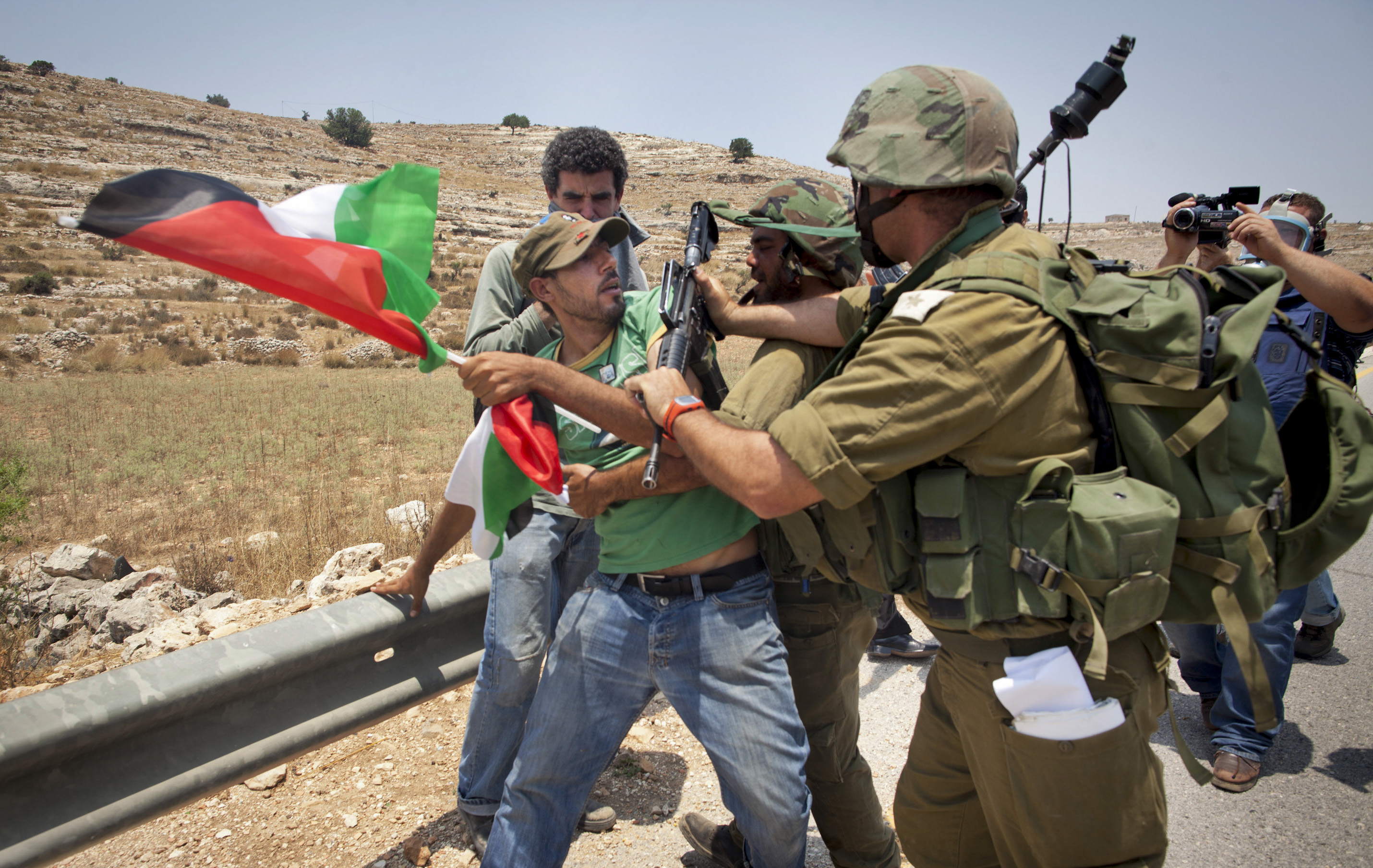

Image for representation purpose only Courtesy: equilibri.net
According to a recent poll on the Geneva Accord, one finds that "53 per cent of the Israelis and almost 56 per cent of the Palestinians support it" (Haaretz Daily). This clearly indicates a strong desire from both sides for a resolution which will end the on-going conflict.
Unfortunately, one does not come across such reports often because they are not deemed media-worthy. Images of violent acts by Palestinian suicide bombers and Israeli soldiers are more eye-catching and controversial. Since the media portrays a predominantly negative image of the conflict, there appears to be no alternate option except violence.
Therefore, expressions like ‘non-violent protest’ within the Israeli-occupied territories seem out of place. While Israelis and Palestinians practise non-violent solutions, the media focuses mainly on their violence, which intensifies group polarization. The media plays a significant role in forming and, later, swaying public opinion.
The Palestinians first tried the option of non-violence in 1983 when an American-educated Palestinian named Mubarak Awad returned to Jerusalem. Awad, with his doctorate in counselling, he began an experimental non-violent movement in the first Palestinian intifada. The intifada is the Palestinian uprising that began in 1987 against the Israeli occupation of the West Bank and Gaza Strip. Awad, now the founder and director of the organizations ‘Non-violence International’ and ‘Palestinian Centre for the Study of Non-violence’ writes:
It is important for Palestinians to focus on non-violent struggle. Large masses of Israelis, who truly yearn for a just peace, can be enlisted in this non-violent struggle against occupation and settlements, whereas there is almost no chance of enlisting them in any armed Palestinian activity. Palestinians will choose non-violence only if they are convinced of its efficacy. The Israelis know well how to fight an armed antagonist, but they have little understanding of how to deal with massive non-violent resistance. They expect and, in fact, need the Palestinians to be either submissive or violent.
Currently, both Israelis and Palestinians prefer the non-violent option. A poll conducted by the American non-profit group ‘Search for Common Ground’ shows that "72 per cent of Palestinians are willing to embrace non-violent resistance to the Israeli occupation".
Similarly, "72 per cent of Israeli Jews would accept a Palestinian state based on the 1967 borders." Another Palestinian peace activist, Ghazi Briegieth, recently gave a tour with the organization ‘Israeli-Palestinian Bereaved Forum for Peace’. Bregieth has experienced personal loss because of the conflict: Israeli soldiers killed two of his brothers.
The organization, he joined, however, advocates the slogan: "No to revenge. Turn the other cheek. Peace over pain." The organization also encourages striking actions and for people to donate blood to ‘enemy’ victims. They want to initiate a dialogue between the two sides and have sponsored a telephone hotline so people can "Stop Killing and Start Talking."
The non-violent protest is, by no means, one-sided. There are impressive demonstrations of non-violent protest by former Israeli military conscripts and reservists who have first hand experience in the occupied territories. Moti Kimtel is one example of such a soldier, who now instructs Palestinians about farming techniques.
Ironically, he returned to help the very people whom he patrolled in the Gaza Strip merely three years earlier. Mr Kimtel commented on this change, "I don’t have the answers to all of Israel’s problems, but I was in the occupied territories as a soldier and now I am here as an activist. It feels like I am doing much more good here as an activist."
Another surprising action taken by Israeli soldiers was when they filed a petition to Israel’s high court on September 30, 2003. Yesh Gvul, a movement of soldiers who refuse to serve in the occupied territories, filed the petition demanding the Israeli High Court to investigate the air strike in the Gaza Strip last year which killed "fifteen Palestinians… including 12 civilians, nine of them children, when an Israeli F-16 fighter jet dropped a one-ton bomb on a residential building in Gaza City."
Defying military orders is extremely difficult; the fact that part of the younger generation does this is highly commendable. An example of this is a young Israeli, 21 years of age, who refuses to serve. He had to serve a jail sentence for his refusal to serve, yet after his jail sentence, Ariel joined "Ta’ayush (Arabic for "life in common")" which is a peace organization. Currently, he camps in front of a Palestinian village to defend it from being bulldozed.
It is not just Israeli soldiers, but also religious clergy who are resorting to non-violence. The rabbis from the peace group called Rabbis for Human Rights (RHR) demonstrate this through their efforts. These rabbis put their lives at stake to defend Palestinian lives. In fact, Rabbi Arik Ascherman, executive director of RHR, uses religion to justify his defence of Palestinian civilians. In an incident that took place on November 24, 2003, the rabbis "went to show solidarity with Palestinian villagers who were preparing to harvest their olives in a few weeks…"
Non-violence is something to which a significant number of Palestinians and Israelis are turning because it seems much more logical than the violent means that are clearly not working. It is obviously the more difficult alternative and requires much patience because the results are not immediately realized.
(Courtesy: Dawn, Karachi)
Archived from Communalism Combat, January 2004 Year 10 No. 95, Breaking Barriers 2
